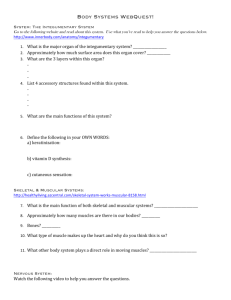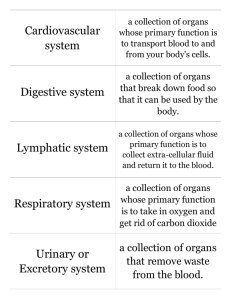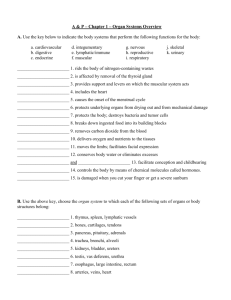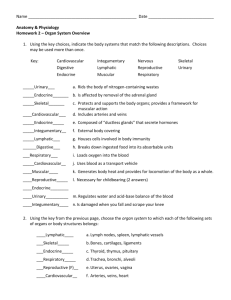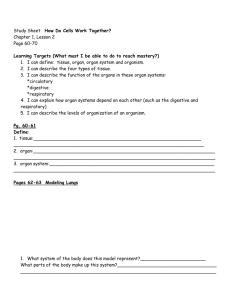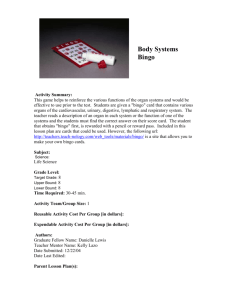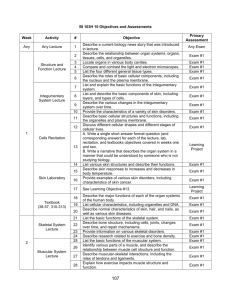ORGANS SYSTEMS REVIEW - Foundation for Biomedical Research
advertisement
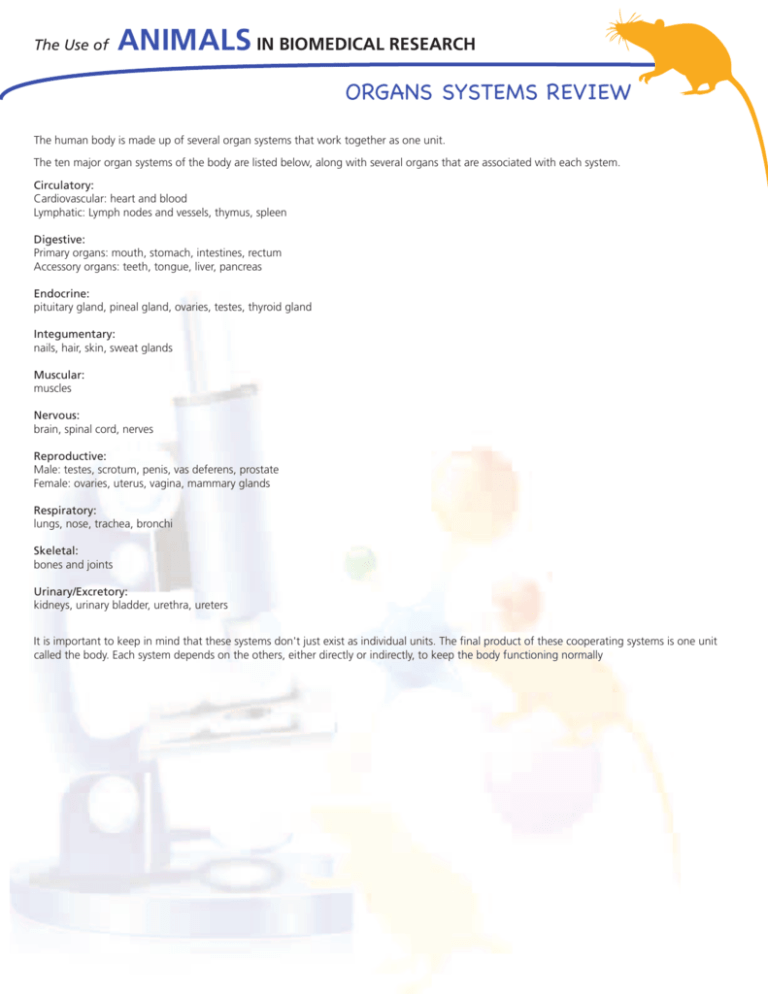
The Use of ANIMALS IN BIOMEDICAL RESEARCH ORGANS SYSTEMS REVIEW The human body is made up of several organ systems that work together as one unit. The ten major organ systems of the body are listed below, along with several organs that are associated with each system. Circulatory: Cardiovascular: heart and blood Lymphatic: Lymph nodes and vessels, thymus, spleen Digestive: Primary organs: mouth, stomach, intestines, rectum Accessory organs: teeth, tongue, liver, pancreas Endocrine: pituitary gland, pineal gland, ovaries, testes, thyroid gland Integumentary: nails, hair, skin, sweat glands Muscular: muscles Nervous: brain, spinal cord, nerves Reproductive: Male: testes, scrotum, penis, vas deferens, prostate Female: ovaries, uterus, vagina, mammary glands Respiratory: lungs, nose, trachea, bronchi Skeletal: bones and joints Urinary/Excretory: kidneys, urinary bladder, urethra, ureters It is important to keep in mind that these systems don't just exist as individual units. The final product of these cooperating systems is one unit called the body. Each system depends on the others, either directly or indirectly, to keep the body functioning normally The Use of ANIMALS IN BIOMEDICAL RESEARCH ORGANS SYSTEMS WORKSHEET 1) The lungs, nose, and trachea are part of which organ system? a) Digestive 6) Most of the nutrient absorption that takes place during digestion occurs in the: b) Respiratory a) Liver c) Muscular b) Large Intestines d) Circulatory c) Stomach d) Small Intestines 2) The kidneys and urethra are part of which organ system? a) Skeletal 7) This system contains the largest organ in the body. b) Digestive a) Cardiovascular c) Urinary b) Reproductive d) Reproductive c) Digestive d) Integumentary 3) Which of the following are NOT part of the integumentary system? a) Nails 8) The skeletons of sharks and human embryos are composed of which type of connective tissue? b) Hair a) Bone c) Skin b) Adipose d) Teeth c) Cartilage d) Collagen b) Urinary c) Endocrine d) Lymphatic 5) Which system helps to protect the body by destroying germs within the body? a) Lymphatic 9) Parts of the urinary system remove liquid waste from the blood. Which system removes gaseous waste (carbon dioxide) from the blood? a) Digestive b) Circulatory c) Respiratory d) Nervous 10) From what source do cells get their food? b) Cardiovascular a) Blood c) Skeletal b) Oxygen d) Respiratory c) Other cells d) Carbon dioxide Answer Key: a) Nervous 1)B; 2) C; 3) D; 4) C; 5) A; 6) D; 7) D; 8) C; 9) C; 10) A 4) The pituitary gland, pineal gland, and the thyroid gland are part of which system?

